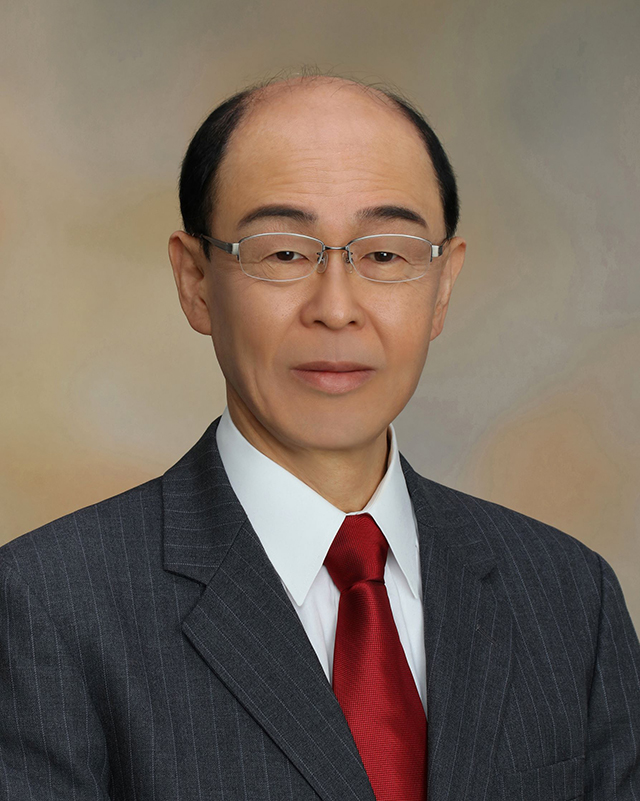Mori Ogai’s Letter
The Chiba University Library holds a handwritten letter by Mori Ogai (1862–1922). Former library director Kouichi Tanaka (director from February 1956 to January 1959) acquired this letter from Kenji Koike*its original recipient. Kenji Koike, a German literature scholar, taught at the Second High School (now Tohoku University) and later, shortly after the establishment of Chiba University, joined the Faculty of Arts and Sciences (known so at the time) at Chiba University as a part-time German lecturer. The letter is a response from Ogai (Mori Rintaro) to Koike's request for permission to publish a German translation of Maihime (A Dancer) on September 27, 1916. This translation was published in 1917 alongside Natsume Soseki’s The Tower of London as the first volume of the German-Japanese Comparative Study Collection by Nankodo.
This letter is introduced in 16 Ogai Documents of Gaps in Ogai Literature (National Literature Studies Series) by Izumi Hasegawa in 1981 , noted as an unpublished letter not included in The Complete Works of Ogai.
The letter states as follows.
<Transcription of Chinese classics into Japanese>
拝誦仕り候。「舞姫」ご翻訳、その発行ならびに原文併記の件、差し支えこれ無く候。訳文見本一葉お示しくださり謝し奉り候。忙中用事のみお返事申し上げ候。ご寛恕下されたく候。
二十七日 森林太郎 小池様
<Modern Translation>
Thank you for your letter. I have no objection to the publication of Maihime (A Dancer) translation, with the original text included. I am grateful to receive a sample of the translation.
Due to my busy schedule, I can only reply briefly. I appreciate your understanding.
Mori Rintaro, 27th (to Mr. Koike)
On the Publication of Mori Ogai’s Letter
Chisato MoriProfessor of the Department of Bioenvironmental Medicine, Graduate School of Medicine, Chiba University, Director of Center for Preventive Medical Sciences, Chiba University (One of the Ogai’s Great-Grandchildren)

This year (2022), marking the 100th anniversary of my great-grandfather Mori Ogai’s death, the publication of a letter previously unpublished in The Complete Works of Mori Ogai has been digitized by Chiba University Library. I am deeply grateful for this and would like to extend my heartfelt thanks to everyone who was involved.
Thanks to the digitization of this letter, written when Ogai was 54, people all over the world now have the chance to learn more about my great-grandfather’s achievements.
In September 1888 (Meiji 21), Ogai returned from his studies in Germany and published his first novel Maihime (A Dancer) in Kokumin no Tomo magazine in January 1890. At that time, for most Japanese, Western countries were so far away that the life there was unimaginable. So, a story portraying the romance between a Western woman and a Japanese man must have come as a great shock to the people of that era. The novel explores an entirely new theme but is written in the classic literary style, using beautiful, traditional Japanese language. As a result, Maihime has long been featured in Japanese language textbooks.
For some reason, Professor Koike Kenji translated Maihime and Natsume Soseki's The Tower of London into German, publishing them together in the German-Japanese Comparative Study Collection. Soseki studied in Great Britain, not Germany, so I am unsure why his novel was chosen for translation into German. Probably Ogai and Soseki were already considered the two literary giants in those days.
According to Mukudori Tsushin (Starling Correspondence) (1909-1913) which reveals Ogai’s work as a journalist, along with records left by his family members, it seems that Ogai placed his hopes in young people and consistently supported their endeavors. Even a young stranger visited him at his home, asking to make him a disciple, Ogai would always meet with them as long as he was at home and would take them to a nearby Western-style restaurant and treat them to a meal. Also, like many intellectuals of his time, Ogai was a diligent letter writer who reply to every letter or postcard he received. In fact, letters addressed to his colleagues and subordinates still occasionally turn up with their descendants, making the news.
The letter being published this time shows the agreement to publish the work by Kenji Koike when he was 38 years old, and it’s likely that Ogai intended to encourage the young scholar committed to carrying on the study of German culture in Japan.
By the way, I started working at Chiba University in 2000. Although I had no relationship with Chiba before, professors and alumni of the Department of Medicine at that time told me, “I learned human anatomy from your grandfather.” I was very surprised, so I asked my father about it. He explained that Ogai’s eldest son, Otto (my grandfather), taught human anatomy as a part-time lecturer at Chiba Medical University in the 1960s, after returning from Taiwan after the World War II. According to my father, when Otto returned from studying in Germany, he had a choice between working at Taipei Imperial University in then-colonial Taiwan and at Chiba Medical University, and he chose Taipei. In writings by his wife, Fuki, she described Otto’s sense of suffocation in Japan under the shadow of his great father and his burning hope when he departed for Taiwan, “like a bird with wings spanning the heavens.”
When I started living in Chiba, I learned that Ogai had once owned a vacation home in Hiari (present-day Isumi City in Chiba Prefecture), that he frequently visited Inage in Chiba City (where Chiba University's main campus is located) for work when it was a military city, and that Ogai's father, Shizuo Mori, studied at the Sakura Juntendo School (now Sakura City in Chiba) during the late Edo period. This made me feel a deep ancestral connection to the area.
Although Ogai is now better known as a novelist, he also dedicated himself wholeheartedly to establishing public health practices in Japan as a physician. In the army, infectious diseases would often spread in communal living environments, claiming many lives. When a typhoid vaccine became available, he published a pocket-sized booklet explaining what vaccines are and why they are effective, distributing it to all officers ranked second lieutenant and above to promote vaccination. In my book, Ogai and Beriberi (2013) , I explored this story in detail. It’s available in the university library, so please have a look if you’re interested.
I hope the digital release of this letter will also shed light on this side of Ogai’s legacy.
Related Links
* Kenji Koike (1878-1969)
A German literature scholar who held teaching positions at institutions including the Second High School (now Tohoku University), Chiba University, and Ochanomizu University. He notably translated works by Natsume Soseki, Futabatei Shimei, and Mori Ogai into German, including most of Ogai's historical short stories as well as Maihime (A Dancer), Utakata no Ki (A Sad Tale), and Gan (The Wild Geese). His academic research includes Hyogen Shugi Bungaku no Kenkyu (A Study of Expressionist Literature) (published in 1926 by Kokin Shoin). (Excerpt from The Great Dictionary of Modern Japanese Literature, Volume II, published in 1977.)
